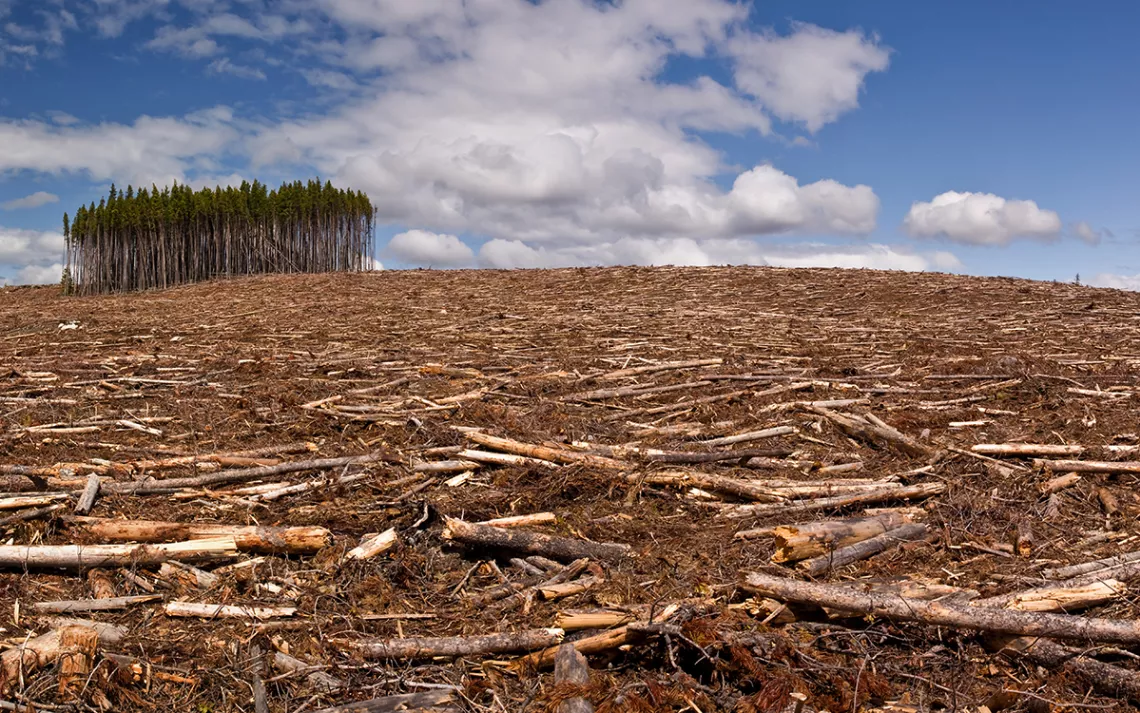Blame It on the Farm Too
Bats and bad ag share responsibility for the coronavirus

Photo by Eppic Photography
The COVID-19 virus likely originated in wild horseshoe bats, according to the latest theories—and possibly another, intermediate species that caught the bat virus and passed it along to humans at a wildlife market. However, that’s not the whole story. Research into the origins of new viruses suggests that the reason COVID-19 was able to leap into the human population has less to do with wild bats and the viruses they carry and more to do with the way that certain Western-influenced farming practices affect the health of humans and wildlife and virtually guarantee the periodic emergence of diseases like Severe Acute Respiratory Syndrome (SARS), H1N1 (bird flu), and now COVID-19.
The technical term for what happened with COVID-19 and the horseshoe bat is “zoonotic spillover”—when another vertebrate transfers a pathogen to humans. Other examples of zoonotic spillover, besides SARS and H1N1, include HIV and the Bubonic Plague. Zoonotic spillover is more likely to occur in landscapes where humans are pushing into wildlife habitat in order to log timber, clear farmland, or raise livestock. This disturbs animal habitats and increases stress levels among wildlife that remains in the area, making those animals more vulnerable to disease as a result.
One of the major ways in which humans disturb wildlife habitat is through agriculture. In recent years, multiple studies have exposed the connection between zoonotic transfer, pathogens, and intensive agriculture (the practice of using large amounts of pesticides and fertilizers to increase the per-acre yield of crops grown and using hormones and antibiotics to accelerate the growth of livestock). The reduction in habitat also pushes wild animals into closer contact with humans and domestic animals, creating opportunities for diseases to spread that would have been limited before.
Last year, a survey of existing research by Dr. Jason Rohr and colleagues found that since 1940, intensive agriculture was associated with more than 25 percent of all infectious diseases that emerged in humans and more than half of all infectious diseases that leaped from animals to humans—and that those percentages would likely increase as more and more land around the world is converted to agricultural use.
Intensive agriculture is popular for a reason. Modern pesticides and fertilizers have led to better nutrition around the world, which has made people healthier overall. But these agricultural innovations have also led to increased pesticide use and loss of biodiversity, two key elements in disease emergence.
When pesticides are applied to a field, they can lower disease resistance in the farmers and farmworkers who apply them, and other people and local wildlife that are exposed to them via dirt, wind, or water. When antibiotics are given to livestock, that encourages the spread of microbial resistance, which means that diseases, when they do emerge, can more easily be transmitted. Elevated nutrient levels in the soil and water—due to heavy fertilizer use—have been linked to exacerbating the impact of infectious diseases. Wild animals become more vulnerable to viruses and bacteria that they have previously coexisted with for generations—and humans and livestock become more likely to come into contact with and be infected by those same viruses and bacteria.
However, Rohr says, certain steps can be taken to mitigate the proliferation of these pathogens.
“Because we share fewer pathogens with plants, decreasing meat consumption might help slow the transfer of these zoonotic diseases,” he says, adding that while eating meat isn’t necessarily the reason why we have spillover events, animal agriculture is a factor.
Reducing food waste, and eating less meat if applied at a large enough scale, reduce the economic pressure that is incentivizing farming in marginal, wild areas, and cutting down forests in order to create grazing areas for cattle. “We already have enough food on the planet to feed everyone,” Rohr says. “The distribution of the food to the people who need it is a major issue.”
Climate change is expanding the range for some species that spread viruses, like the mosquitoes that carry dengue fever. “The climates closer to the temperate zones may warm and may be optimal places for those tropical parasites that are moving that way,” says Rohr.” But on the flip side, temperatures may get too hot for these parasites. As temperatures increase, we might move closer to the optimum for some, and further away from the optimum for others.”
Instead, it’s one of the main drivers of climate change—deforestation, and the conversion of former forests and wetlands to intensive agriculture—that is fueling zoonotic transfer. Which means that the case for protecting and restoring the world’s wild landscapes is not just to mitigate climate change, or to respect the rights and land management expertise of Indigenous peoples—it’s also to prevent some epidemics before they even start.
 The Magazine of The Sierra Club
The Magazine of The Sierra Club



